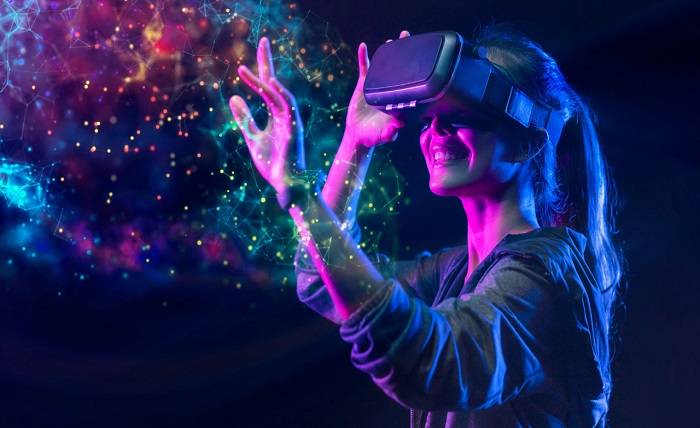The Future of Virtual Reality: Transforming Experiences and Shaping Realities

Virtual Reality (VR) technology has come a long way since its inception, immersing users in artificial, computer-generated environments and experiences. From entertainment and gaming to education, training, and therapeutic applications, VR is revolutionizing various industries and pushing the boundaries of human interaction with digital worlds. As we look ahead, the future of virtual reality holds exciting prospects and potential. In this blog post, we will explore the advancements in VR technology, its applications in different fields, the impact on society and culture, the challenges to widespread adoption, and the implications of an increasingly VR-driven slot88 world.
- Advancements in Virtual Reality Technology
VR technology has undergone significant advancements:
- Head-Mounted Displays (HMDs): Modern HMDs offer high-resolution displays, wide fields of view, and built-in tracking, enhancing immersion.
- Hand and Body Tracking: Precise hand and body tracking enable more natural interactions within virtual environments.
- Applications of Virtual Reality
Virtual Reality finds applications in diverse industries:
- Gaming and Entertainment: VR gaming offers immersive and interactive experiences, enhancing gameplay and user engagement.
- Education and Training: VR is used for training simulations, providing realistic and safe learning environments.
- Healthcare and Therapy: VR is utilized in pain management, exposure therapy, and rehabilitation programs.
- Immersive Storytelling and Media
VR is changing the landscape of storytelling and media consumption:
- 360-degree Video and VR Films: VR films and 360-degree videos provide immersive storytelling experiences.
- VR Journalism: VR allows journalists to transport audiences to the heart of news events.
- Social Interaction and Collaboration in Virtual Worlds
VR is transforming the way people interact and collaborate:
- Social VR Platforms: Virtual worlds enable social interactions, events, and gatherings in a digital space.
- Virtual Meetings and Collaboration: VR facilitates remote collaboration and communication for teams and businesses.
- VR and Education
VR has the potential to revolutionize education and learning:
- Virtual Classrooms: VR classrooms offer interactive and engaging learning experiences.
- Historical and Cultural Education: VR enables students to explore historical sites and cultures in a virtual setting.
- Impact on Mental Health and Well-Being
VR is being explored as a tool to improve mental health:
- Exposure Therapy: VR exposure therapy aids in treating phobias, anxiety disorders, and PTSD.
- Stress Reduction and Relaxation: VR experiences can help reduce stress and promote relaxation.
- Ethical Considerations in Virtual Reality
VR technology raises ethical concerns and challenges:
- Privacy and Data Security: VR systems collect sensitive user data, necessitating robust privacy measures.
- Addiction and Escapism: VR’s immersive nature may lead to addiction or excessive escapism.
- Challenges in Widespread VR Adoption
The widespread adoption of VR faces several challenges:
- Cost and Accessibility: High-quality VR systems can be expensive, limiting accessibility.
- Motion Sickness and Discomfort: Some users experience motion sickness or discomfort in VR environments.
- The Impact on Physical Reality and Social Interaction
The increasing prevalence of VR could reshape physical reality and social dynamics:
- Virtual vs. Physical Spaces: Virtual interactions may alter the use and design of physical spaces.
- Digital Personas and Identity: VR avatars and digital personas may influence individuals’ self-perception and identity.
- The Future of Mixed Reality and Augmented Reality
Mixed Reality (MR) and Augmented Reality (AR) are emerging as complementary technologies:
- MR and Real-World Interaction: MR combines virtual and physical elements, allowing users to interact with both simultaneously.
- AR for Enhanced Experiences: AR overlays digital content onto the real world, enhancing real-world experiences.
Conclusion
Virtual Reality has come a long way from its early experiments to becoming a transformative force in various industries and aspects of daily life. As technology continues to advance, VR’s potential will only grow, offering even more immersive, interactive, and impactful experiences. From entertainment and gaming to education, healthcare, and social interactions, VR is shaping realities and altering the way we perceive and interact with the digital and physical worlds.
However, the growing prevalence of VR also raises ethical considerations and challenges, such as data privacy, addiction, and the impact on social dynamics. As we move forward, it is essential to embrace VR responsibly, ensuring that its benefits are harnessed while mitigating potential risks.
The future of VR is intertwined with that of Augmented Reality (AR) and Mixed Reality (MR), where virtual elements merge seamlessly with the real world, opening up a new realm of possibilities for creativity, productivity, and social connectivity.
By embracing the potential of Virtual Reality responsibly, promoting accessibility, and addressing ethical concerns, we can unlock its full transformative power and use it to enrich education, healthcare, entertainment, and various other aspects of human life. As VR continues to evolve, it has the potential to redefine the boundaries of human experience, offering a gateway to new realities and shaping the future of how we perceive and interact with our digital and physical worlds.




